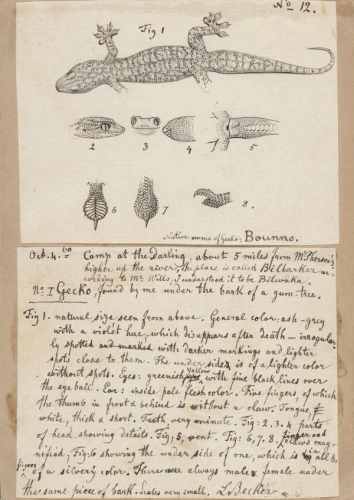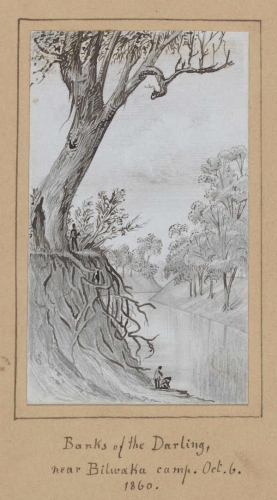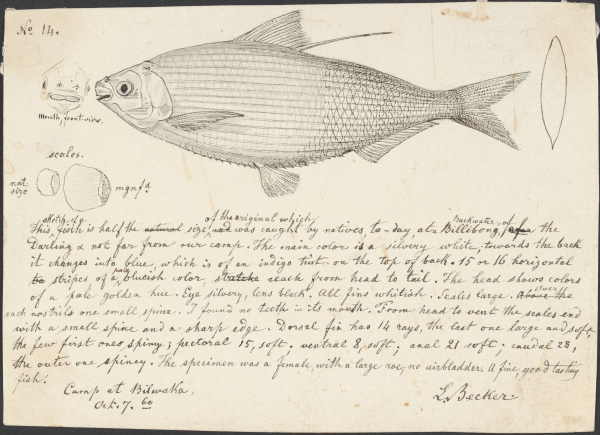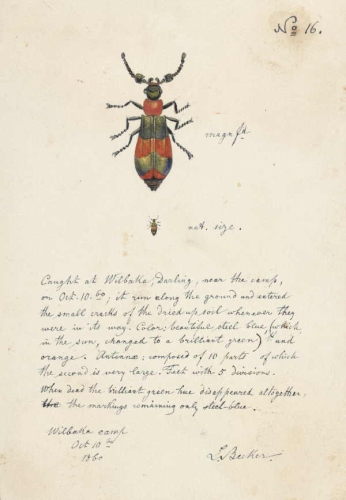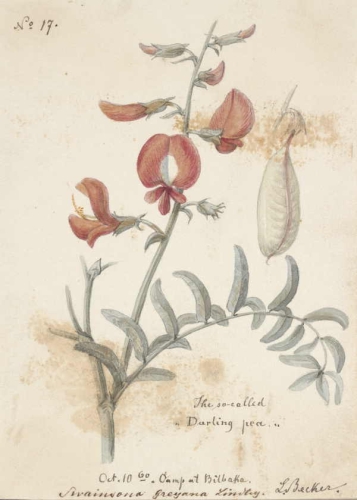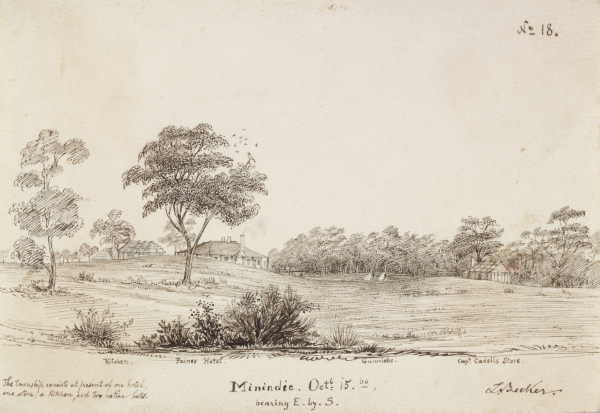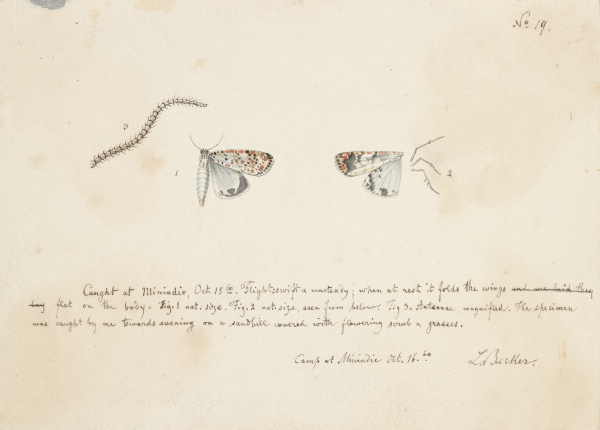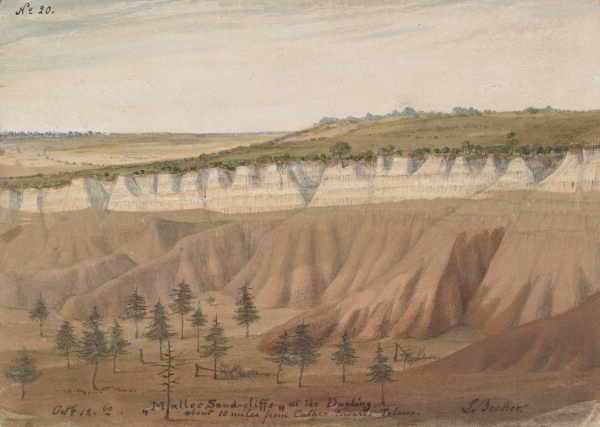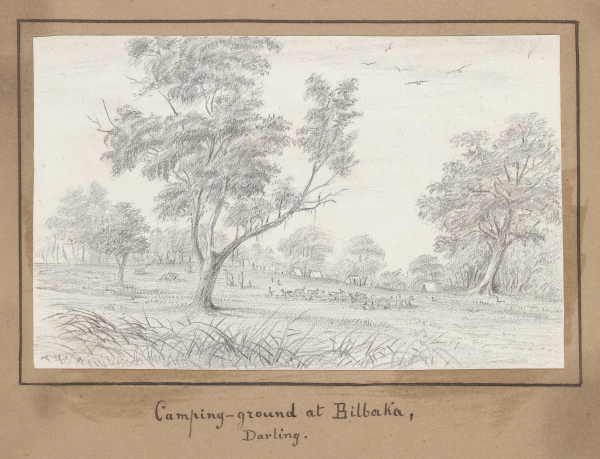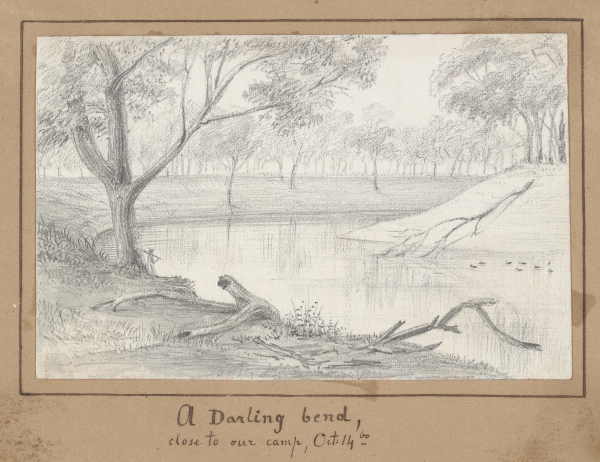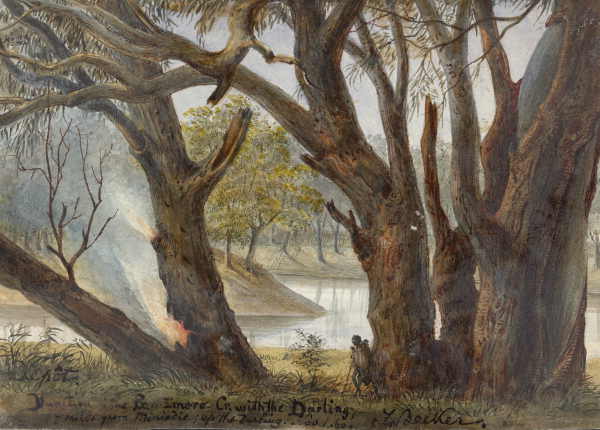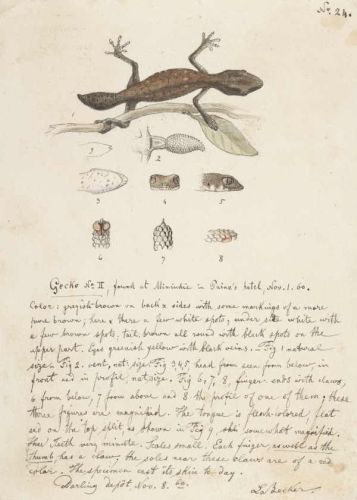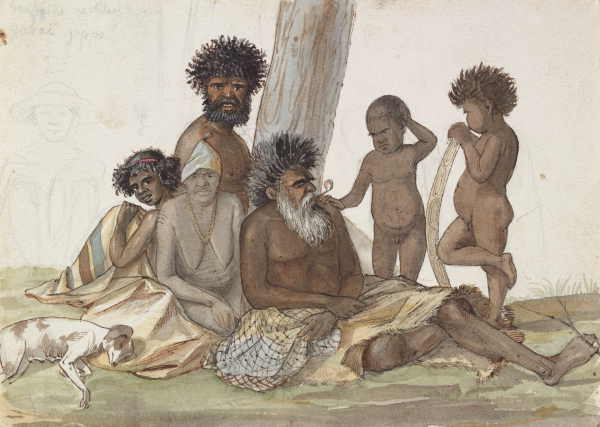|
Monday, 17 September 1860.
Mr Burke ordered me to take charge of the stores left behind in the camp at Balranald. Brahe to act as foreman over the following men: Ferguson, Langon, Macilwayn and one of the Indians all who had to follow afterwards the main party. In the afternoon Mr Burke discharged these four men, leaving myself with Brahe in the camp. Towards evening Ferguson and the three others went to the advanced camp of Mr Burke. I brought the different things, which were left behind. in order, and took a list of the same. I also had charge of four camels and one saddle horse, to follow the main party on the following day.
Tuesday, 18 September 1860.
Beludge, the Indian, returned early this morning on camels-back, and commenced working again; I understood him saying, that, through Mr Landels, he was to remain. Ferguson, Langan and Macilwayn left Balranald today for Melbourne. I delivered the stores to Mrssr Sparks, Crawsie and Co and left at 2½ p.m. the place with Brahe, Beludge, one horse and five camels. Following Mr Burke's track we reached Lake Paika at 7 p.m. distant by road 12 miles from Balranald. We camped for the night near the lake at a station belonging to Mr Morris, where the superintend, Mr Mayne, gave me kindly some information about Lake Paika. This sheet of water is due north from Balranald, and, in a strait line, 10 miles distant from that place. The lake is the result of an overflow of the Murrumbidgee and at present very low; its diameter now is only 1 + 2 miles, when full, its dimensions are 2 + 3 miles. Another lake, some five miles to the north of Paika, has banks composed of gypsum. The soil between Balranald and Paika consists of the all prevailing sandy loam intersected by sand hills; Mallee and pines are predominant. Near Paika a deposit of infusoria was observed by Mr Wills; when I passed that spot it was already after dark and therefore escaped my noticing it.
Wednesday, 19 September 1860.
Starting at 9 a.m. we went in a N. Westerly direction towards Tinn, 14 miles distance, where a water hole gave us the means of refreshing us at noon. Close to that place Mr Ross dug a large reservoir, lined with brick-walls, for the purpose of storing the surface-water. The ground thrown out was sandy loam, clay and white sand. No fossils were found. After an hour's rest we marched again and entered the main-camp at 6 p.m. Reporting myself I delivered the 5 camels and one horse in comparatively good condition after this days journey of 30 miles. Our way today led us through that same loamy and sandy soil which we have met with for the last eight days. The scenery was marked by great silence; scarcely a bird was seen or a note heard from them. A very small quail ran for some time between the marching camels legs and was nearly trotten upon by them; I thought it to be a young bird, and when I saw its beautiful plumage. I dismounted to catch it, but it flew away with great rapidity the moment I left the stirrup. Of insects I saw only a few; an exception made Cynthia cardu' (painted lady) which was rather abundant. We went through extensive scrubs of Mallee, and then over a large plain studded with flowers of a white, yellow and violet color, offering a fine sight to the eye so much tired already by the monotonous Mallee vegetation. A peculiar aspect presented a salsolaceous plant, a Phagodia, whose blueish-grey foliage gave the field the appearance as if it were partly affected by an hoarfrost. The place we camped for the night is an out-station of Mr Ross and called Terickenkom,' (a native name, signifying a fish of the bream kind-according to the natives) the white population however corrupted it and the place is also called 'Jerusalem'.
Thursday, 20 September 1860.
At daylight I saw a small watercourse near the camp and not far from it another reservoir commenced by Mr Ross to receive the precious fluid. Here again the geological formation is a loamy soil, under which a layer of sand of several feet thickness was met with resting on clay; the whole section is about 14 feet thick. Behind some bushes and looking at our doings several natives sat on the ground, among them was a couple of women whose faces were painted in such a manner as to give the head the appearance of a skull when seen from the distance: round the eyes was drawn with white paint, a circle, an inch broad, and the hair of on woman tied up closely and covered with a piece of cloth, while the other lubra had her hair painted or rather smeared over with the same white color giving the head a still more skull-like appearance. (See sketch No. 8.). I found that this mode of painting the faces is a habit met with as far as the Darling; it is a sign of mourning for relations and that women as well as Men show in the same way their respect for the departed friends. We left Terickenkom at 11 a.m. and marched slowly over a heavy ground. A black fellow guided us through the Mallee scrub however the old track was visible enough even for a white fellow's eye. On was our way I found a landshell, a helix, the animal of which feeds on salt-bushes, according to our native guides statement. The country we travelled over was an undulated one, with no sign of water and without it, we arrived at 6½ p.m. at an open spot in the bush, where Professor Neumayer already had lit his camp-fire. Fortunately for us Bowman found half a mile away a small pool of water, and although thick and dirty it gave us some relief. Our distance travelled today was about 15 miles and in a nearly due westerly direction.
Friday, 21 September 1860.
The night was very cold; some water left in a tin plate was in the morning a thick sheet of ice. At 6½ we left the inhospitable spot and without breakfast nor water steered again in a westerly direction. After eight miles marching through Mallee we found ourselves suddenly in front of a range of bald sandhills covered with limestone concrete. They are called Wrankal-Hills and stretch for several miles from N. to S; their height is between 20 feet and 140 feet. From the top of these hills we saw before us an extensive plain with a belt of timber at the far of horizon, with a few white spots between the distant trees: they are tents at an outstation of Mr Morris, which place we reached about noon. At this outstation an artificial reservoir is already in use and did us and our animals good service with its contents. The water was 3 feet deep, however, only the upper portion of it was not brackish. We awaited at that watering-place the arrival of our 7 waggons which we saw descending the Wrankal Hills and slowly creeping over the plains. The exhausted drivers and the worn-out horses reached us towards evening.
Saturday, 22 September 1860.
Last night I received the order from Mr Burke to stay behind and to assist in bringing the waggons after the main party, Dr Beckler in charge of men and stores. Mr Burke left Wrankal today at 12¼ p.m. taking with him all the camels and the saddle-horses, save two, which were to accompany the waggons. An hour after Mr Burke, we left Wrankal likewise travelling in a N.W. direction our party consisted of Dr Beckler, myself, Hodginson, Brahe, Patton and five hired drivers, about 33 draft-horses and seven waggons. At 3 p.m. and about five miles from Wrankal we arrived at a place called Gilalba, marked by a black shepherds tent and a waterhole; here we stopped for the rest of the day, intending to give the over-worked and under-fed horses a spell of one day, and to start on Monday with fresh powers. The country we have passed through today was an undulated one, looking fine, well timbered and apparently with plenty of grass. The waterhole at Gilalba was dug into a ground consisting of a loose and light-colored sand.
Sunday, 23 September 1860.
Early this morning Mr Burke returned to Gilalba telling us to move on at once and to go to Cole's water holes where, he said was sufficient water left to fill our water-bags. The drivers were sorry to be obliged to go on without the expected Sunday's rest. In the afternoon at 2½ we left Gilalba and the waggons were dragged in a N.N.E. direction through a heavy sandy, after every 10 yards the horses stopped, which time was used for cutting down trees when they were in the way of our track. Cole's water-hole was reached at sunset and we commenced at once filling the water-bags, leaving a small clay pan, half full of muddy water for the horses. Water and grass was here far inferior to Gilalba's which place is only five miles from Coles. On both places we saw a fine bird which I took for Leadbeater's cockatoo but being not quite sure I give a few colors which will tell what bird It is: Crest-feathers pale vermilion with pure yellow in the middle of each crest-feather; the under-side of wing pale red; the rest of body white; bill grey; eyes and feet black. Where ever I saw this bird water was close at hand. -At Coles a well 8 feet deep, was sunk, but we found no water in it; the stratum cut through is a loose sand with patches and blocks of very brittle and ferruginous sandstone. |
|




